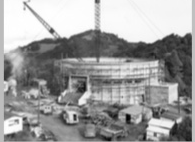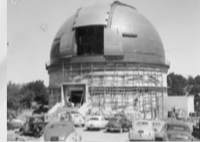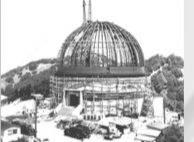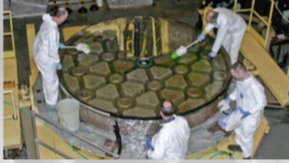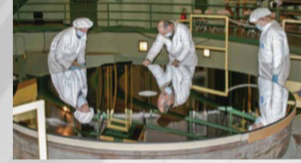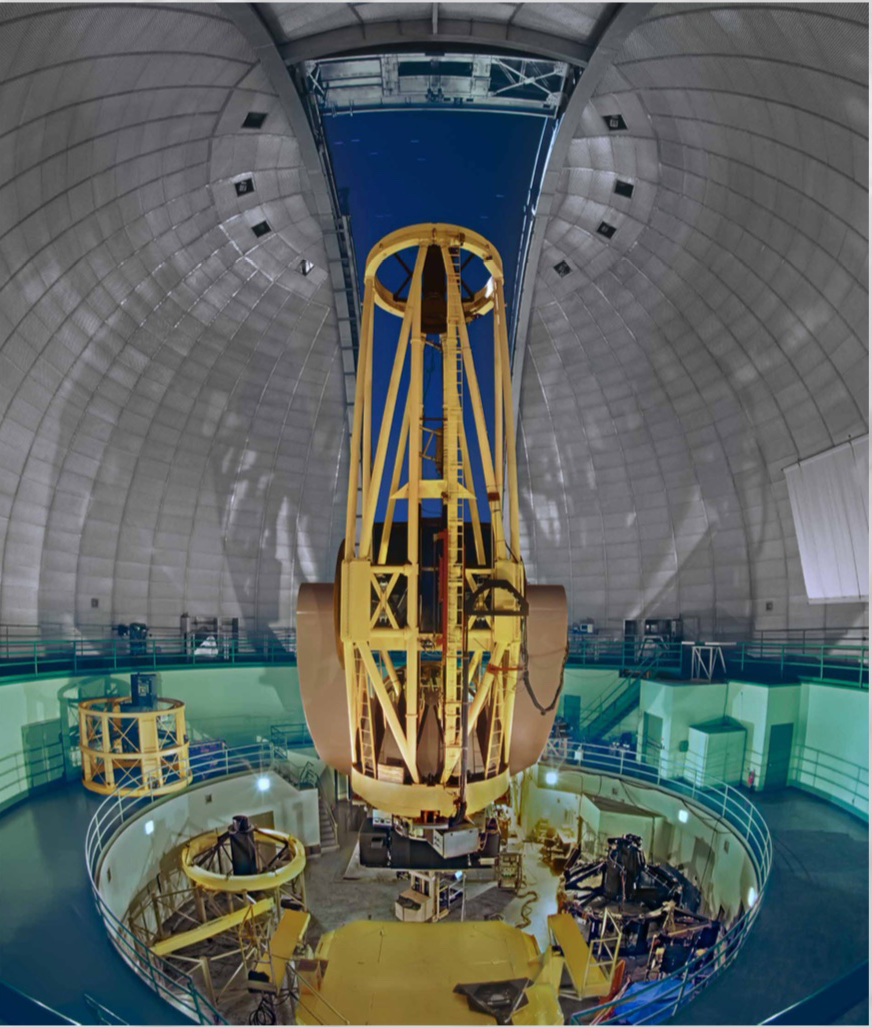The Shane 3-meter Reflector: A Leap Forward for Lick Observatory
In the first three decades of the 20th century, large reflecting telescopes at other observatories began to eclipse Mount Hamilton’s two 36-inch instruments. UC astronomers needed a world-class reflector. In 1959, the 3-meter (120-inch) Shane Reflector was finished. Then the world’s second largest telescope, it catapulted Lick back onto the observational frontline.
Today, despite being surpassed in size by newer telescopes, the Shane 3-meter remains highly productive. Its outstanding track record and continued productivity are due to UC’s ongoing development of new instruments and the caliber of its astronomers.
The 3-meter operates every clear night of the year, hosting observing programs as varied as the interests of its broad community of users. Shane observers track the weather on Uranus and Neptune, follow up the detections of gravitational waves, investigate the nuclei of active galaxies and the black holes at the centers of quasars, monitor newly discovered supernovae, measure cosmic distances with state-of-the-art precision, add to our knowledge of planets orbiting nearby stars, study star-forming galaxies, develop astronomy’s next generation of smart, sensitive instruments, and much more.
Every few years, the 3-meter mirror’s reflective aluminum coating is renewed. Above left, technicians wash away the old coating with acid; above right is the newly recoated mirror, ready to be reinstalled in the telescope.
Astronomers choose one of three optical configurations, not unlike choosing the best camera lens for a particular shot. Each is best suited to a certain type of observation. Reconfiguration takes about half a day and requires swapping the telescope’s top end with one of the “rings” seen in the image below on the dome floor and mezzanine.
The Shane Telescope has been at the forefront of astronomical discoveries since its construction in the 1950s. Discovering planets around other stars is one of these notable projects. The video below describes how these discoveries were done, using innovative technology.
